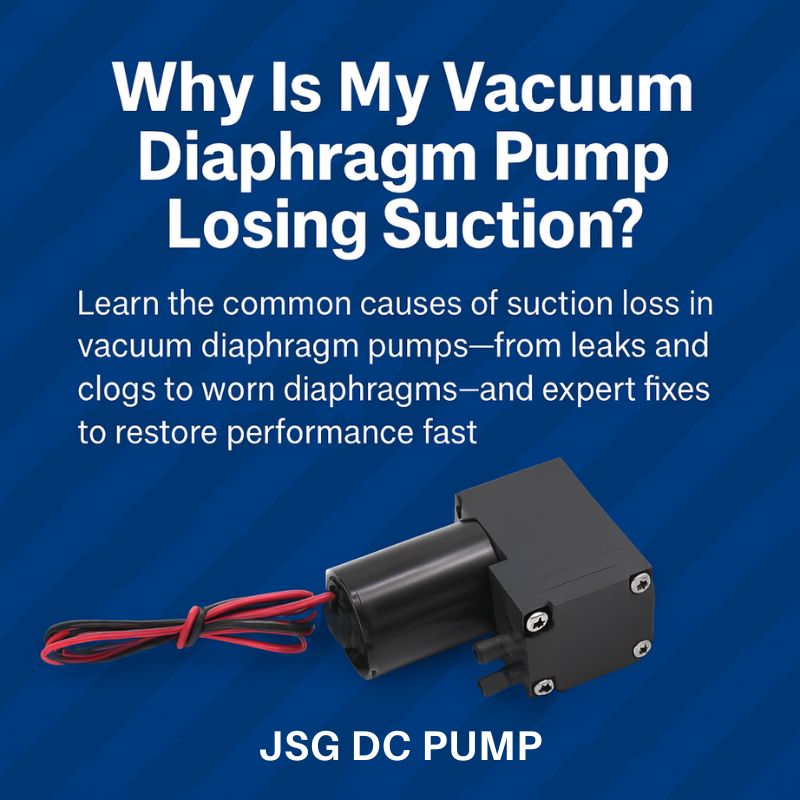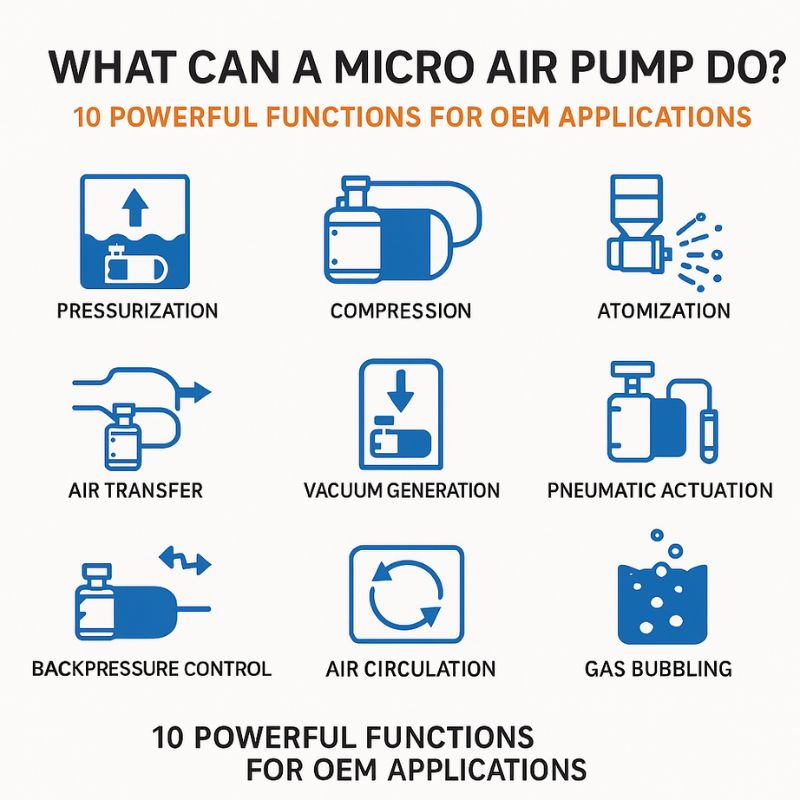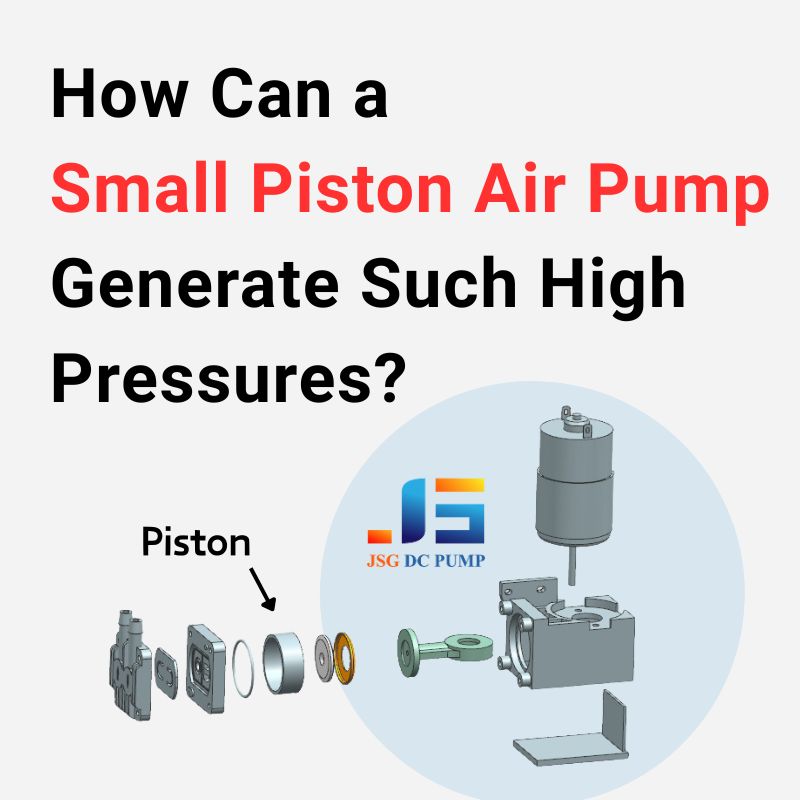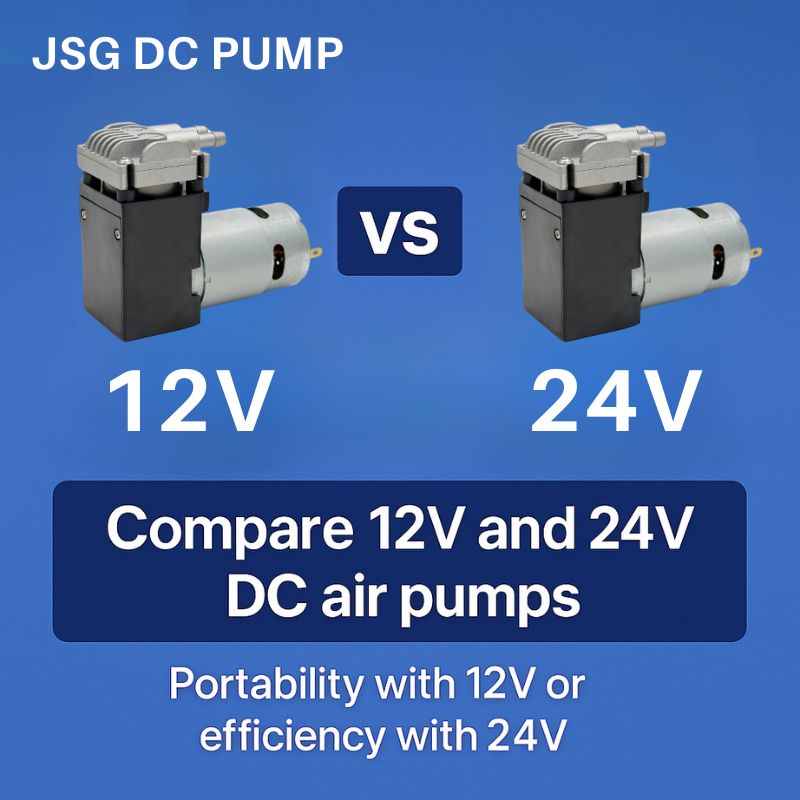You’re comparing datasheets for two compact vacuum pumps. One lists “-80 kPa” and another “21.3 kPa,” but both claim high performance. Choosing the wrong one based on a simple misunderstanding can derail your project.
Compact vacuum pump specifications almost always list maximum vacuum level as a gauge pressure. This value, typically negative (e.g., -80 kPa), represents how much pressure the pump can remove below the local atmospheric pressure, not its absolute pressure value.

As an engineer at JSG, I’ve seen this question cause significant confusion for design teams. The term “maximum pressure” on a compact vacuum pump‘s spec sheet is inherently counterintuitive. You’re trying to remove air, to create a lack of pressure, so why talk about a maximum? Understanding how manufacturers define this critical parameter is the key to selecting the right pump for your application. Let’s clear up the ambiguity between gauge and absolute pressure once and for all.
What Does “Maximum Pressure” Really Mean for a Compact Vacuum Pump?
You see “Maximum Pressure” on a data sheet for a vacuum pump and pause. Is this a typo? Does it refer to the pressure coming out of the exhaust port, or something else entirely?
For a vacuum pump, “maximum pressure” is a shorthand term for the ‘maximum vacuum’ or ‘ultimate vacuum’ it can achieve. It quantifies the pump’s ability to reduce pressure inside a sealed system.
Let’s be very clear: it does not refer to the output pressure at the pump’s exhaust. The specification is all about suction capability. Think of atmospheric pressure as your starting point, or “zero.” The “maximum pressure” value tells you how far below this starting point the pump can go.
For instance, a rating of -80 kPa means the pump can reduce the pressure in a container to 80 kPa below the surrounding atmospheric pressure. It is a measure of the pump’s strength in creating a vacuum. This is why you will often see the specification called “Maximum Vacuum” instead to avoid this exact confusion, but both terms refer to the same performance metric.
What is the Difference Between Gauge Pressure and Absolute Pressure?
The units themselves—psig vs. psia, or kPa(g) vs. kPa(a)—are another source of confusion. Using the wrong reference point in your calculations can lead to significant design errors.
Gauge pressure (psig, kPa(g)) uses the surrounding atmospheric pressure as its zero point. Absolute pressure (psia, kPa(a)) uses a perfect vacuum (zero air molecules) as its zero point and is always a positive value.
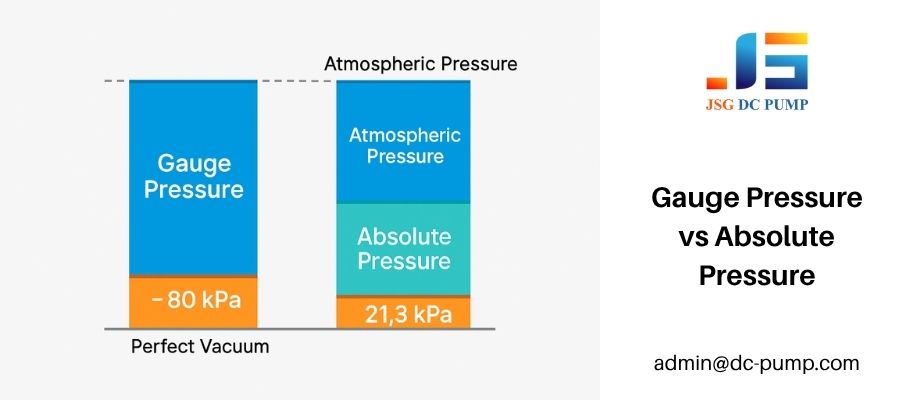
The only difference between the two is their starting point, or “zero reference.”
- Gauge Pressure: This is what most mechanical gauges measure. It tells you how much a pressure differs from the current atmospheric pressure. It can be positive (like a tire pressure gauge) or negative (like a vacuum gauge).
- Absolute Pressure: This is an absolute scale. Zero absolute pressure is a perfect vacuum. Atmospheric pressure at sea level is approximately 101.3 kPa(a) or 14.7 psia.
Here is how they relate to each other:
| Pressure Type | Zero Reference Point | Example (Vacuum) | Formula |
|---|---|---|---|
| Gauge Pressure | Local Atmospheric Pressure | -80 kPa(g) | Varies with altitude |
| Absolute Pressure | A Perfect Vacuum | 21.3 kPa(a) | Always positive |
The key formula is: Absolute Pressure = Atmospheric Pressure + Gauge Pressure. For a vacuum of -80 kPa(g) at sea level, the absolute pressure would be 101.3 kPa + (-80 kPa) = 21.3 kPa(a).
How Do Compact Vacuum Pump Manufacturers Define Pressure Ratings?
So, you understand the theory. But what will you actually see when you open a technical datasheet from a manufacturer like JSG DC PUMP or our competitors?
The overwhelming industry standard is to specify a pump’s maximum vacuum capability as a negative gauge pressure. You will typically see it listed as “Maximum Vacuum” or “Maximum Pressure” with a negative value (e.g., -80 kPa).
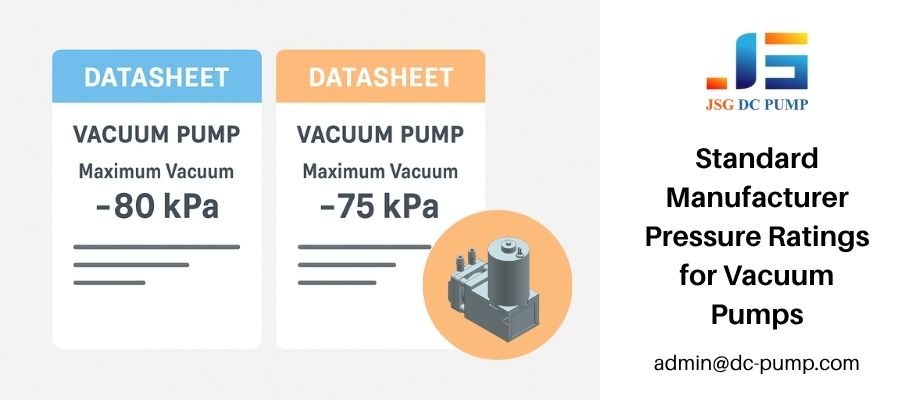
While physicists and scientists often work in absolute pressure for theoretical calculations, engineers designing real-world equipment almost always work in gauge pressure. Therefore, manufacturers create datasheets that speak the language of their primary customers.
When you browse our catalog of compact vacuum pumps at dc-pump.com, you will see vacuum ratings expressed in kilopascals (kPa) or millimeters of mercury (mmHg) as a measure of how far below atmospheric pressure the pump can perform. If the value is simply listed as “80 kPa,” it is implied to be a vacuum level of -80 kPa(g). Always look for a negative sign or the word “vacuum” to be certain.
Why Is Gauge Pressure Commonly Used in Compact Vacuum Pump Datasheets?
Why did this industry convention arise? Using absolute pressure seems more scientific, so why stick with gauge pressure? The reasons are rooted in practicality and real-world engineering.
Gauge pressure is used because it directly reflects the pump’s performance relative to its immediate environment. It provides a more intuitive, practical measure of the suction force the pump can generate against the atmosphere.
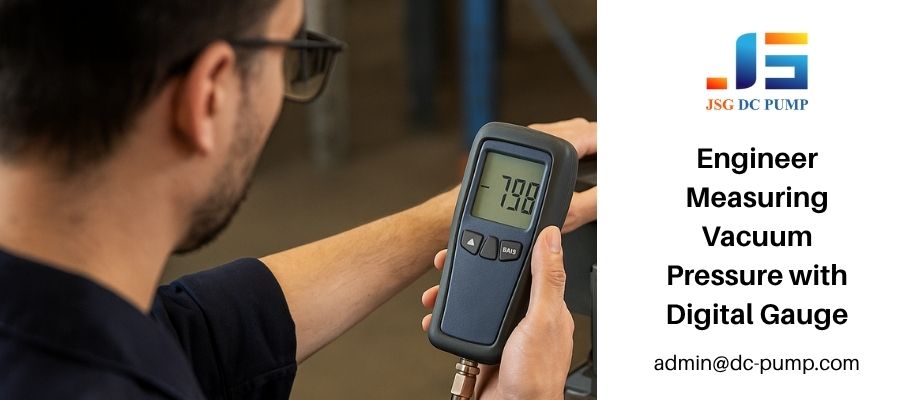
There are several practical reasons why gauge pressure is the standard:
- Intuitive Performance: An engineer needs to know how well a pump will work on their factory floor or in their field instrument, not in a theoretical perfect vacuum. Gauge pressure directly answers the question: “How much suction will this pump create right here, right now?”
- Ease of Measurement: Nearly all standard industrial pressure and vacuum gauges are built to measure gauge pressure. This makes it simple for engineers to test and verify a pump’s performance against its datasheet without needing to measure the local barometric pressure and do conversions.
- Direct Comparison: Since atmospheric pressure changes with altitude, specifying vacuum in absolute pressure would require every user to know their exact local atmospheric pressure to understand the pump’s effective strength. Using gauge pressure provides a consistent performance benchmark that can be easily compared across different models.
How Can You Interpret Pressure Data When Comparing Compact Vacuum Pumps?
You have two datasheets in front of you. One pump is rated at -75 kPa and the other at 600 mmHg. How do you know which one creates a stronger vacuum?
To compare pumps, first ensure all values are converted to the same unit (e.g., kPa). Then, remember that for vacuum (negative gauge pressure), a larger negative number indicates a stronger vacuum (e.g., -80 kPa is stronger than -70 kPa).
Here is a practical guide to avoid misinterpretation:
- Standardize Your Units: You cannot compare kPa and mmHg directly. Use an online converter or a standard conversion factor to get all ratings into a single unit. For reference:
101.3 kPa ≈ 14.7 psi ≈ 760 mmHg. - Identify the Reference: Assume the specification is gauge pressure unless it explicitly states “absolute” or uses units like “psia” or “kPa(a).” For vacuum pumps, this will almost always be a negative gauge value.
- Compare the Magnitude: With negative gauge pressures, the “more negative” the number, the deeper the vacuum. A pump rated for -90 kPa is more powerful than one rated for -80 kPa because it removes more air relative to the atmosphere.
- Check for Positive Values: If a datasheet lists a positive absolute pressure (e.g., 11.3 kPa abs), you must convert it to gauge pressure to compare. Subtract it from atmospheric pressure (
101.3 - 11.3 = -90 kPa(g)).
What Are the Key Takeaways for Selecting the Right Compact Vacuum Pump?
Choosing the correct pump boils down to understanding your true requirements and accurately interpreting the technical data provided by manufacturers.
When selecting a pump, confirm the pressure type (assume gauge), standardize your units for comparison, and choose a pump whose performance curve comfortably exceeds the demands of your actual working conditions.
To ensure you make the right choice, always keep these points in mind:
- Assume Gauge Pressure: Unless explicitly stated otherwise, a vacuum pump’s maximum pressure rating is a negative gauge pressure.
- Unit Consistency is Key: Convert all competing specifications to a single unit (like kPa) before making any comparisons.
- “More Negative” is “More Powerful”: A rating of -90 kPa represents a deeper vacuum and a more powerful pump than -80 kPa.
- Consult the Experts: The datasheet is a starting point. At JSG DC PUMP, we encourage engineers to discuss their specific application with us. We can help you analyze your system’s flow and pressure requirements to ensure the pump you select is not just adequate, but optimal.
Conclusion
Understanding that compact vacuum pump specifications use gauge pressure is crucial for accurate engineering evaluation. Always convert all pressure values into common units before comparison, and remember — a larger negative number (e.g., –90 kPa) means a stronger vacuum relative to atmospheric pressure. Correct interpretation ensures reliable performance and project success.
💡 Partner with the Experts
At JSG DC PUMP, we help engineers and OEM designers select and customize compact vacuum pumps that deliver accurate, consistent performance. Whether you need technical consultation or OEM customization, our team provides professional guidance based on real engineering data.
📧 Contact us: admin@dc-pump.com
🌐 Visit us: dc-pump.com




